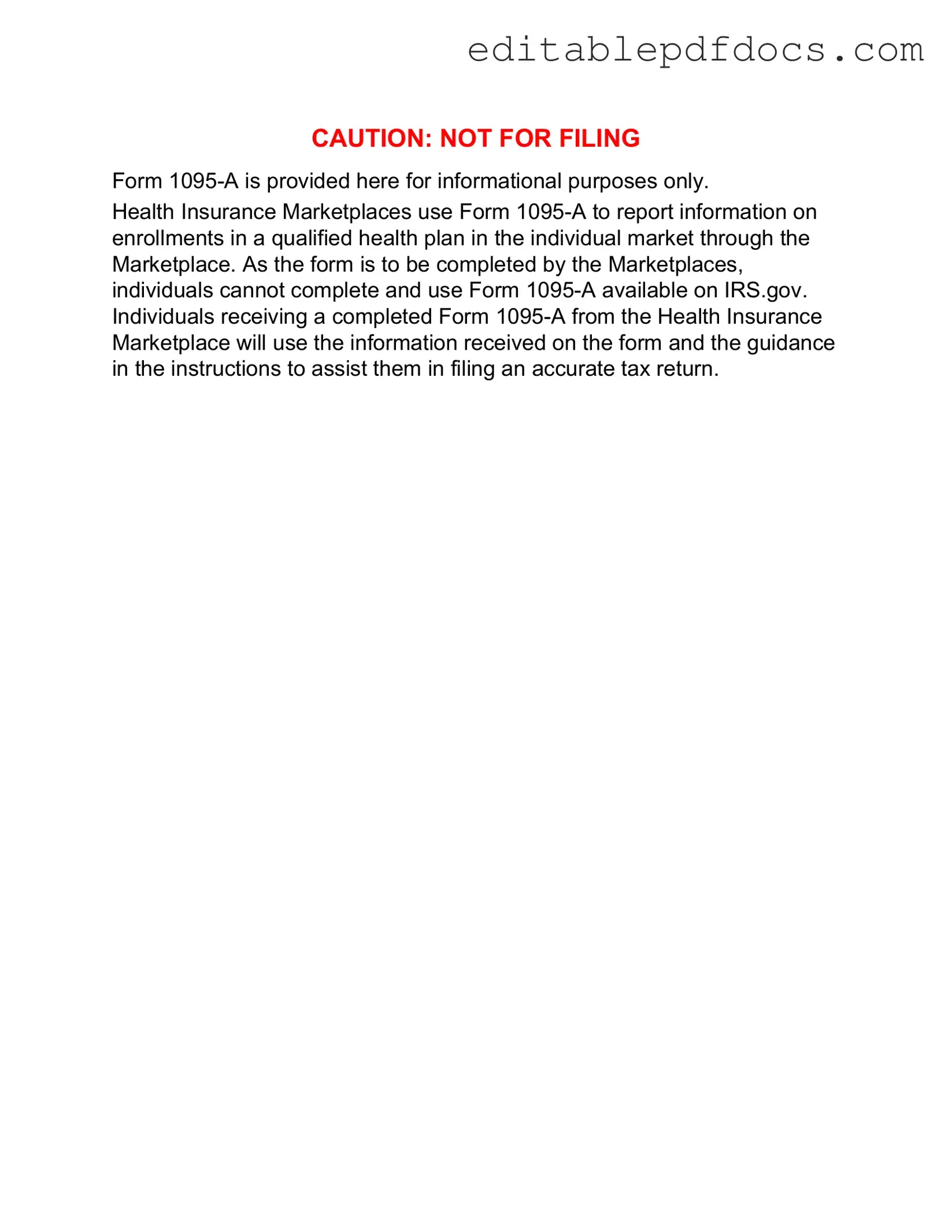Filling out the IRS 1095-A form can be a daunting task for many individuals. This form is essential for those who received health insurance coverage through the Health Insurance Marketplace. However, several common mistakes can lead to complications when filing taxes. Understanding these pitfalls can help ensure a smoother process.
One frequent error is incorrect personal information. It’s crucial to double-check names, Social Security numbers, and addresses. A simple typo can delay processing and create confusion with the IRS. Make sure that all details match exactly with the information on your tax return.
Another mistake occurs when people fail to report all members of their household. If you received coverage through the Marketplace, you must include everyone who was part of your household during the coverage period. Omitting a family member can lead to discrepancies in your tax return and potential penalties.
Many individuals also overlook the importance of understanding the coverage dates. Each Marketplace plan has specific start and end dates. Not accurately reporting these dates can result in errors when reconciling premium tax credits. Always verify that the coverage period listed on the form aligns with your records.
Some people miscalculate their premium tax credits. The 1095-A form provides necessary information to determine the correct amount of credit. Failing to accurately use this information can lead to underreporting or overreporting your tax obligations. Be sure to carefully review the amounts listed on the form.
Additionally, individuals sometimes neglect to keep a copy of the 1095-A form for their records. This document is essential not only for filing taxes but also for any future reference. Having a copy can help clarify any questions or issues that may arise later.
Another common issue is not filing the form on time. The IRS requires the 1095-A to be submitted alongside your tax return. Missing the deadline can result in penalties and complications with your tax status. Always be mindful of the filing timeline.
Some taxpayers fail to understand how to use the form correctly when filing. The 1095-A must be used to fill out IRS Form 8962, which calculates the premium tax credit. Ignoring this step can lead to errors in your tax return. Familiarize yourself with the connection between these forms to avoid mistakes.
Lastly, individuals may not seek assistance when needed. Tax laws can be complex, and the 1095-A form is no exception. If you’re unsure about any aspect of the form, consider consulting a tax professional. Seeking help can save you time and prevent costly mistakes.
